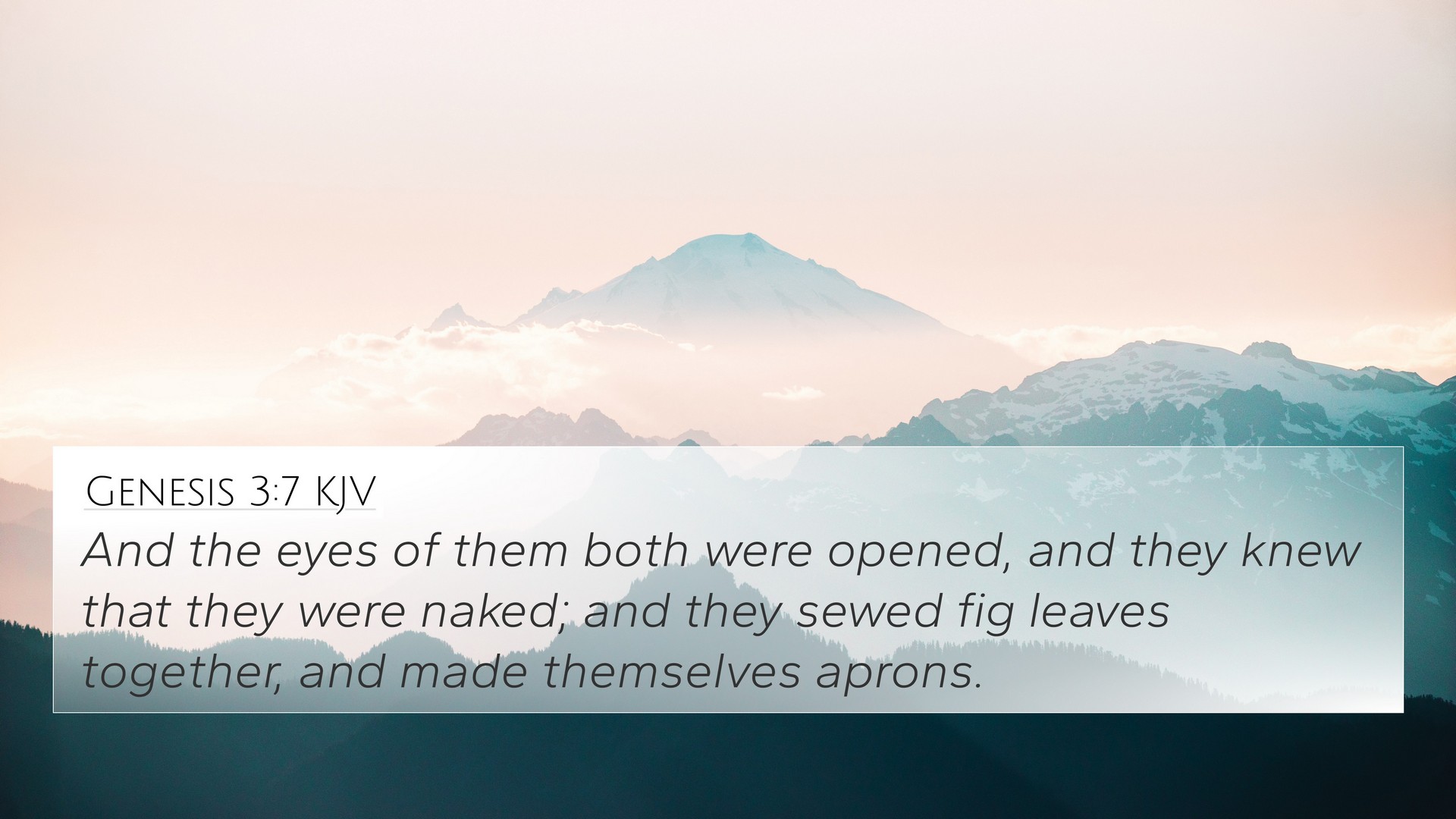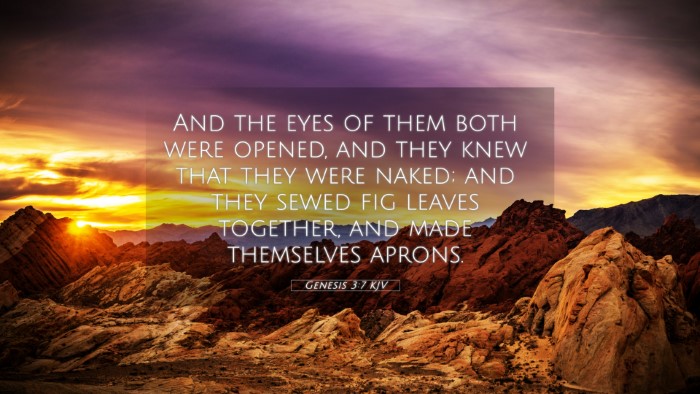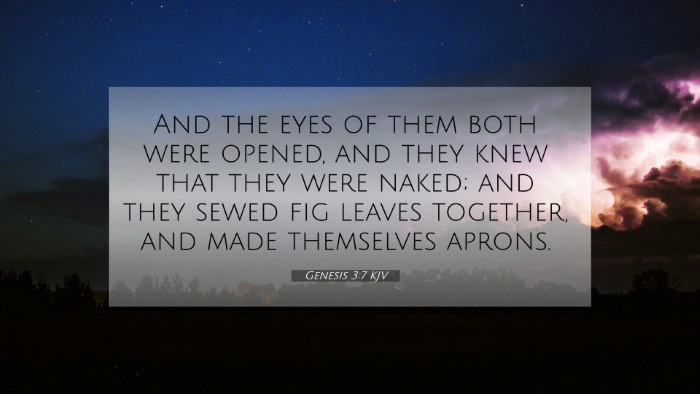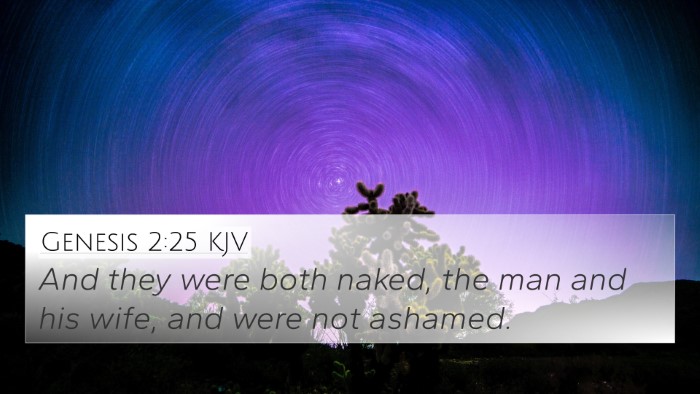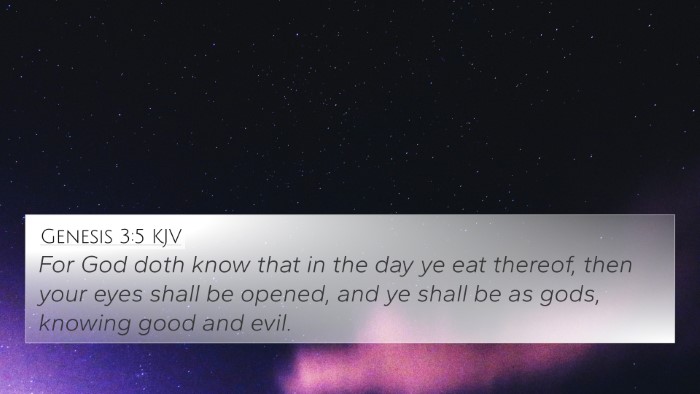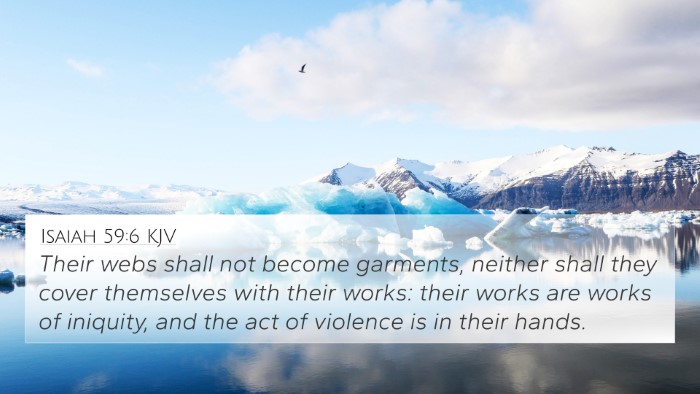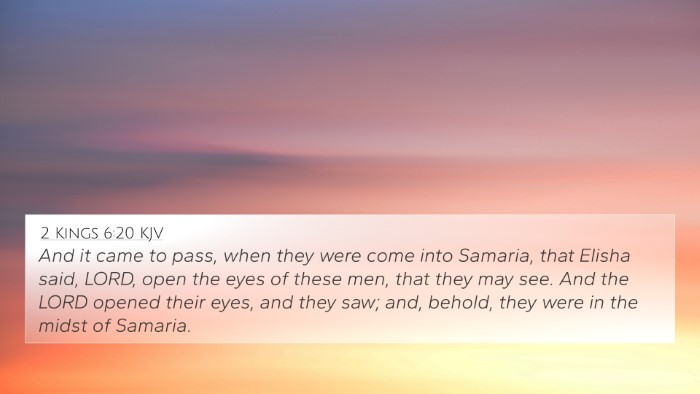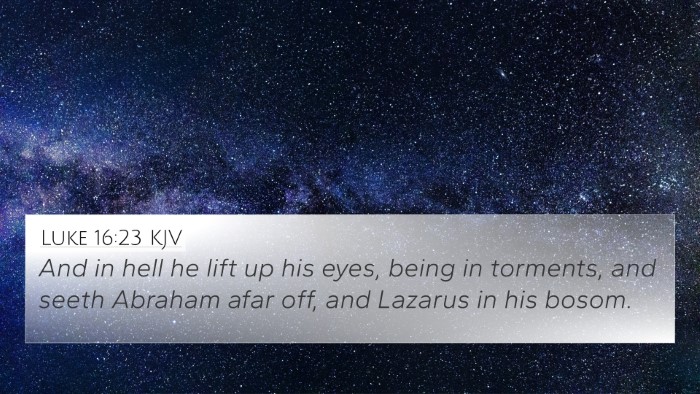Understanding Genesis 3:7
Genesis 3:7 states: "Then the eyes of both of them were opened, and they knew that they were naked; and they sewed fig leaves together and made themselves loincloths."
Overview of Genesis 3:7
This verse signifies a profound turning point in humanity's relationship with God following the act of disobedience by Adam and Eve. The opening of their eyes symbolizes a newfound awareness of sin and shame.
Commentary Insights
Matthew Henry's Commentary
Henry emphasizes that this awareness of nakedness indicates a loss of innocence and purity. The act of sewing fig leaves together is seen as an attempt to hide from God, reflecting the inherent human tendency to conceal our faults and shame.
Albert Barnes' Notes
Barnes discusses the implications of spiritual enlightenment brought by transgression. The couple’s realization leads them to self-sufficient actions to cover their nakedness, illustrating a departure from reliance on God.
Adam Clarke's Commentary
Clarke links this moment to the psychological effects of sin, suggesting that Adam and Eve’s fulfilled consciousness brought about a duality of self-awareness that removed them from their original state of moral and ethical simplicity.
Theological Significance
This verse marks the beginning of moral awareness and the concept of shame associated with sin. It reflects humanity's internal struggle between innocence and the consequences of wrongdoing.
Cross-References for Genesis 3:7
- Genesis 2:25: "And they were both naked, the man and his wife, and were not ashamed."
- Romans 3:23: "For all have sinned and fall short of the glory of God."
- Isaiah 59:2: "But your iniquities have separated you from your God."
- Genesis 4:7: "If you do well, will you not be accepted? And if you do not do well, sin is crouching at the door."
- 1 John 1:8: "If we say we have no sin, we deceive ourselves, and the truth is not in us."
- 2 Corinthians 5:3: "If indeed, having been clothed, we shall not be found naked."
- Revelation 3:17: "Because you say, 'I am rich, have become wealthy, and have need of nothing,' and do not know that you are wretched, miserable, poor, blind, and naked."
Connecting Themes in Scripture
The act of Adam and Eve sewing fig leaves can be viewed through the lens of the following broader themes in the Bible:
- Shame and Guilt: The dawning of consciousness about sin is a common theme found from Genesis to Revelation.
- Human Attempts to Hide from God: Both in this verse and in later texts, humanity’s tendency to cover up sin is prevalent.
- Consequences of Sin: The awareness of their nakedness brings forth the theological implications of sin that are explored throughout scripture.
- Hope and Redemption: Though this verse highlights the fall, the overarching narrative of the Bible quickly leads to God's redemptive plan through Christ.
Tools for Cross-Referencing
For those studying Genesis 3:7 and its connections, various tools can enhance understanding:
- Bible Concordance: A comprehensive reference of terms and phrases that helps in locating Bible verses related to shame and awareness.
- Bible Cross-Reference Guide: Useful for connecting related themes, such as sin and its effects throughout scripture.
- Cross-Reference Study Methods: Techniques to deepen biblical understanding and highlight interconnections, including thematic studies and comparative analysis.
- Bible Reference Resources: Guides or materials that assist in piecing together the theological significance of verses.
- Chain References: Linking scripture that shares thematic similarities to explore the depths of biblical teaching.
Conclusion
Genesis 3:7 encapsulates the essence of human experience post-fall—shame, awareness, and the attempt to self-cover our sins. Cross-referencing this verse reveals a tapestry of biblical truths that address both the consequences of disobedience and the hope found in redemption through Christ. By utilizing comprehensive tools and methods for cross-referencing, readers can gain deeper insights into how this verse connects with broader themes in Scripture.
Further Study
For individuals seeking a deeper understanding of Genesis 3:7, consider exploring:
- Your own reflections on the nature of sin and self-awareness.
- Comparative studies of the teachings of the Old Testament prophets and their connections to New Testament revelations.
- The implications of shame throughout human history as recorded in the Bible.
- Links between Genesis and Revelation regarding the theme of redemption and restoration.
- The relationship between human free will and divine command in the context of obedience and disobedience.
